Up and Up: Breaking Against the Wind
[higher-education STEM maker 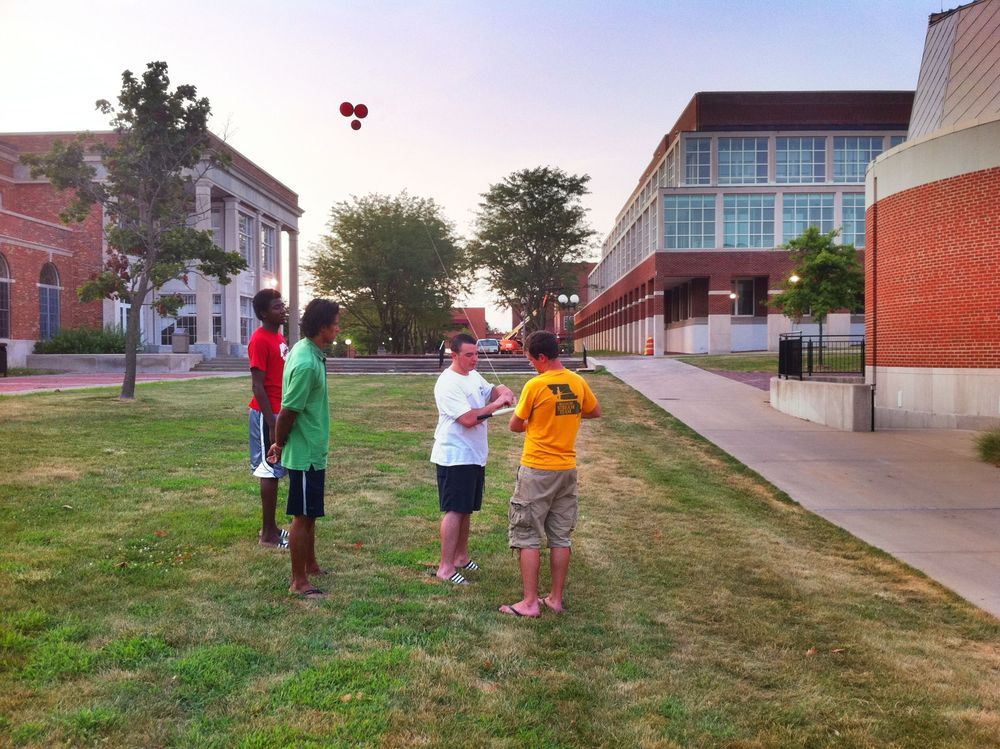
This post is for those of you who are keeping score at home. The more we play with this apparatus (from Make Magazine vol. 24), the more we understand its strengths and vulnerabilities. Overall, the helium balloon imaging satellite continues to be great fun. When we’re outside testing it, people ask questions or look up at the balloon rig and smile. Often, we get a chance to proselytize for ‘making’ in service of STEM education. I hope our excitement is infectious.
(At one point, a science professor approached us to ask what we were doing. I describe the project and introduced the student working with me at the time. “Are you a physics major?” the prof asked him, making a reasonable assumption. “Political science,” he replied. That gave me the perfect moment to say, “Science is for everyone.”)
Wind is a source of frustration for us. The 36” diameter balloons are so big (about 1020 square inches in profile) that they are pushed around by the wind. And it doesn’t take much wind to it. This sets the gondola with its camera to swinging around. And since the Aries camera is an el-cheapo, the images suffer from motion blur.
Wednesday, we tried to loft the balloon on campus between the science building and the student union. (Our location is pictured at the topi of this post.) The buildings sheltered the balloons from the breeze until they ascended to about 50 feet. At that point, the light breeze pushed the balloons downwind and lower (putting the tether at a 30 to 45 degree angle of elevation with the horizontal). As long as we gave the balloons slack, the tether’s angle of elevation increased and the balloons ascended. But when the tether reached its end, and the balloon hung above the library, we’d watch as the breeze pushed the balloon down out of sight beyond the building.
At one point, we could only hope the string didn’t break as we dragged it back across the library building’s coping.
Here are some of the 25 pics we took when we first attempted our on campus launches. I’m sparing you the most blurry.
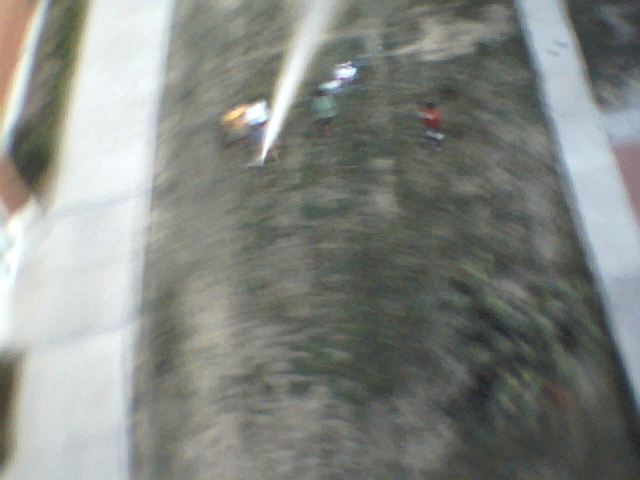
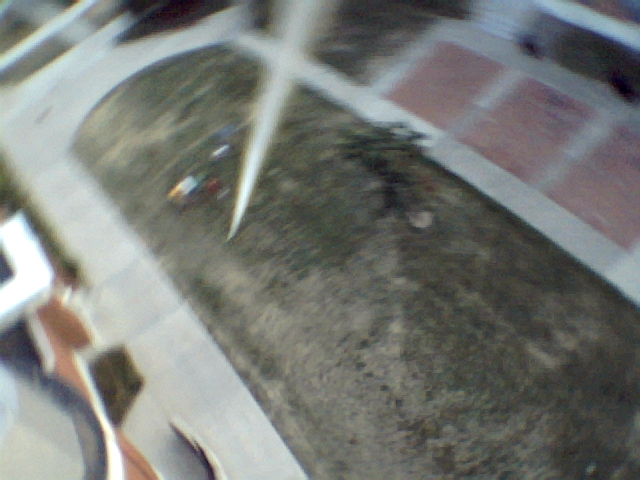 ]
]
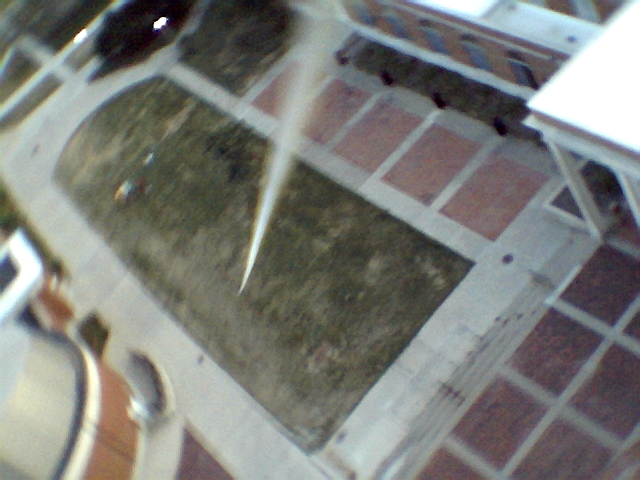 ]
]
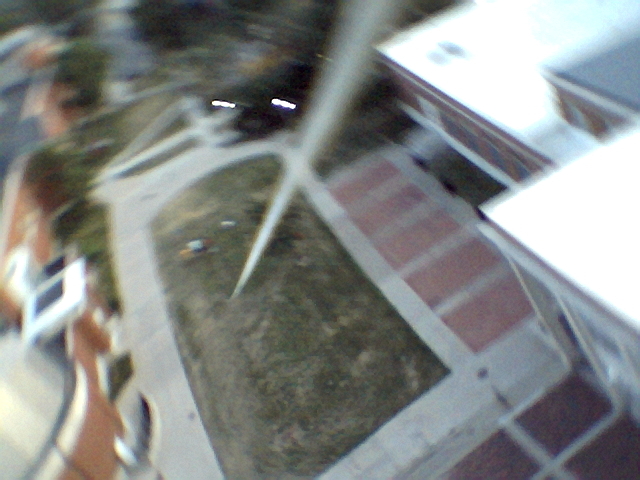 ]
]
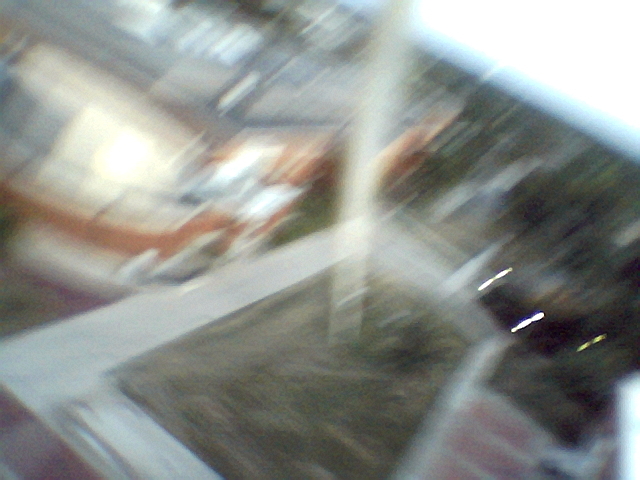 ]
]
The next day, we chose to test the camera on campus. This time we didn’t let the balloon go quite as high.

 ]
]
 ]
]
 ]
]
 ]
]
 ]
]
In this last series of pics, you can start to see the rig we’re using to wind the tether in an out. It’s essentially a winch driven by a cordless drill, and it’s works pretty well. Here are a series of three pics taken as we’re drawing the balloon back down.
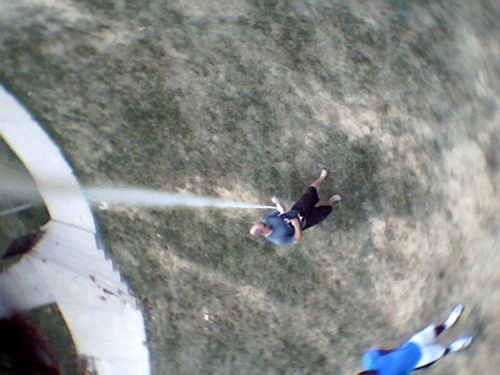
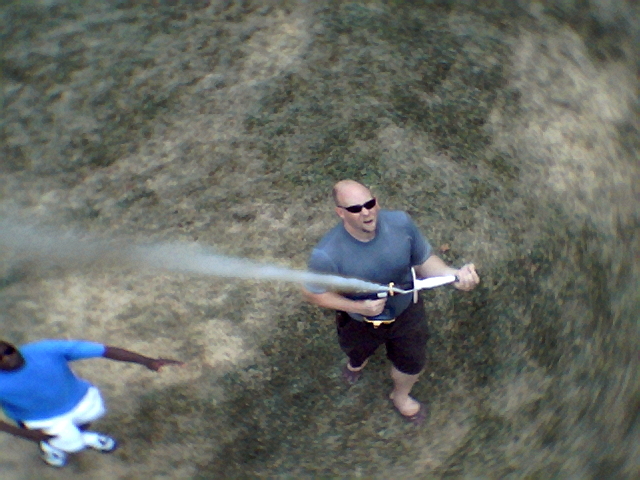 ]
]
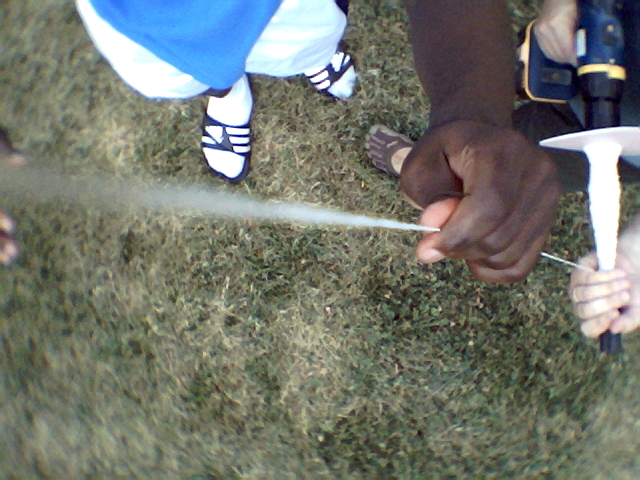 ]
]
Others who are interested in this project should take note that breeze is bad. You want very calm weather to get the best quality photographic results.